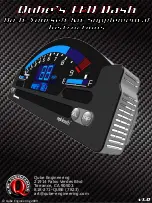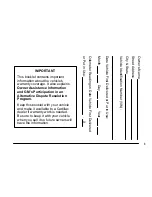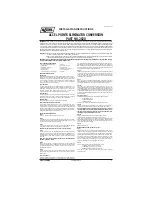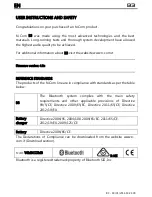
NOTE:
If it is necessary to check the transmission below
the operating temperature, the fluid level should be
between the two “COLD” (lower) holes on the dip-
stick with the fluid at 60-70°F / 16-21°C. Only use
the COLD region of the dipstick as a rough reference
when setting the fluid level after a transmission ser-
vice or fluid change. Recheck the fluid level, and
adjust as required, once the transmission reaches
normal operating temperature.
CAUTION!
If the fluid temperature is below 50°F (10°C) it may
not register on the dipstick. Do not add fluid until the
temperature is elevated enough to produce an accu-
rate reading. Run the engine at idle, in PARK, to warm
the fluid.
8. Reinsert the dipstick until fully seated and lock it
down. The bending of the blade will orient the cap in
the correct position. Do not force or rotate the cap
into another position. Check for leaks. Release the
parking brake.
Fluid And Filter Changes — Eight-Speed
Transmission
Under normal operating conditions, the fluid installed at
the factory will provide satisfactory lubrication for the
life of the vehicle.
Routine fluid and filter changes are not required. How-
ever, change the fluid and filter if the fluid becomes
contaminated (with water, etc.), or if the transmission is
disassembled for any reason.
Fluid And Filter Changes — Six Speed
Transmission
Refer to the “Maintenance Plan” for the proper mainte-
nance intervals.
In addition, change the fluid and filters if the fluid
becomes contaminated (with water, etc.), or if the trans-
mission is disassembled for any reason.
REAR AXLE AND 4X4 FRONT
DRIVING AXLE FLUID LEVEL
For normal service, periodic fluid level checks are not
required. When the vehicle is serviced for other reasons
the exterior surfaces of the axle assembly should be
inspected. If gear oil leakage is suspected inspect the
fluid level. This inspection should be made with the
vehicle in a level position.
To check the axle fluid, park the vehicle on a level sur-
face. Take a piece of wire (or zip tie) and make a
90 degree bend two inches from the end of the wire.
Insert the wire into the fill plug hole and use it like a
dipstick. Remove the wire and measure from the
90 degree bend to the oil level.
For the 2500 (Non-Power Wagon) axles, the fluid level
should be 4/5 in ± 1/4 in (20.3 mm ± 6.4 mm) below
the fill hole for the rear axle and it should be 1/4 in ±
1/4 in (6.4 mm ± 6.4 mm) below the fill hole on the
front axle.
For the 2500 Power Wagon and all 3500 model axles,
the fluid level should be 1/4 in ± 1/4 in (6.4 mm ±
6.4 mm) below the fill hole on the 9.25 in front, 11.5 in
rear axle, and 12.0 in rear axle.
Drain And Refill
Refer to the “Maintenance Plan” for the proper mainte-
nance intervals.
Lubricant Selection
Refer to “Fluids And Lubricants” in “Technical Specifica-
tions” for further information.
NOTE:
The presence of water in the gear lubricant will result in
corrosion and possible failure of differential compo-
nents. Operation of the vehicle in water, as may be
encountered in some off-highway types of service, will
require draining and refilling the axle to avoid damage.
Limited-Slip Differentials
DO REQUIRE
limited slip oil
additive (friction modifiers).
NOTE:
Slight noise and mild shuddering may be evident while
turning a vehicle with limited slip differential on con-
crete or dry pavement. These conditions should be con-
sidered normal operation of the limited slip differential.
44 Inch Dipstick
SERVICING AND MAINTENANCE
309
7
















































